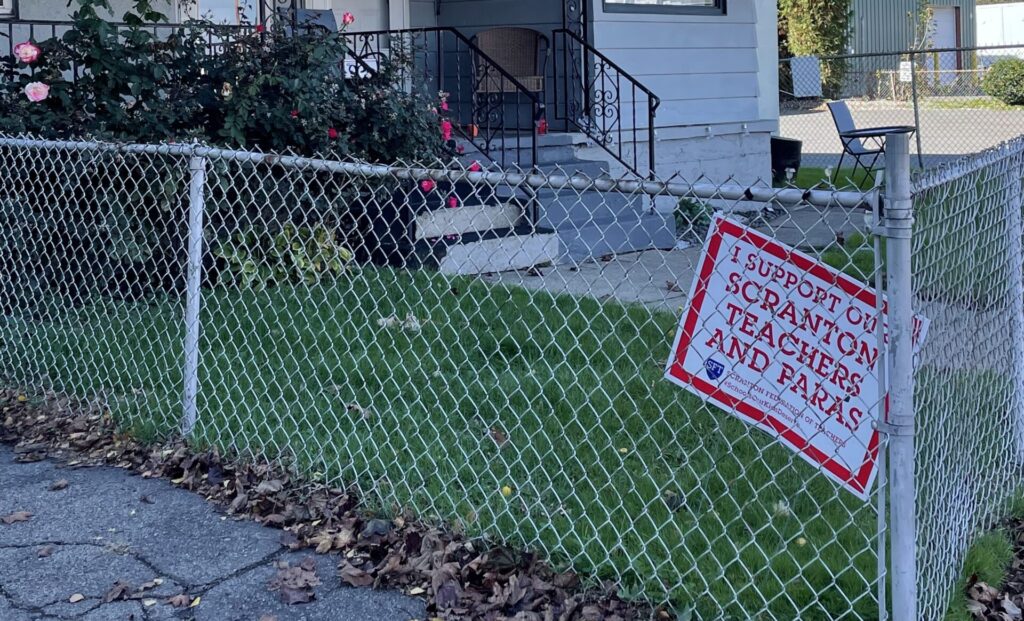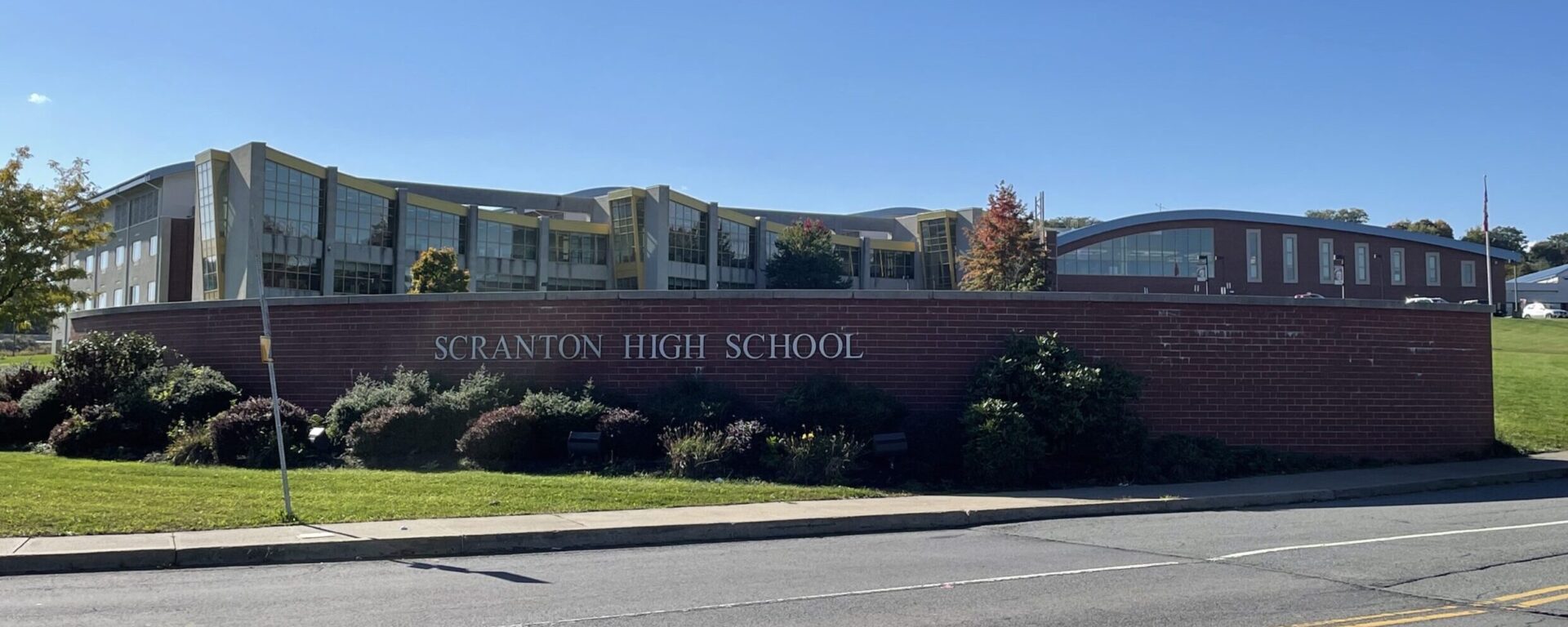A year after staging a victorious twelve-day strike, the Scranton Federation of Teachers is back at the negotiating table, according to school board officials. The contract, which expires in 2023, included a roughly eight percent increase in starting salaries and partial retroactive pay raises for existing teachers to cover the five previous years they worked under an expired contract.
High inflation rates have essentially wiped out these wage gains. So, with less than a year left in their contract, Scranton’s teachers are determined to obtain higher pay, better health insurance, and more support.
“Essentially a status quo is a loss,” says Adam McCormick, a Scranton High School teacher and member of the SFT’s negotiating committee. “If everything stays the same, we’re losing money.”
This time around, the SFT’s strategy is to work harder in initial negotiations to galvanize the community and avoid picketing, McCormick says. “I think we’re in a better spot this, this time… I think the relationships we built with the community… and even some of the administrators and school board… hopefully things go in the right direction. We recognize that we’re going to be better working together than dividing ourselves.”
However, negotiating a concession from the school board has never been easy.
Fueled by decades of mismanagement and underfunding, the district’s schools are more than $255 million in debt, according to a recent school district update. So even though many school board directors are quick to show support for teachers, when it comes to handing out more money, the board is powerless.
Starting in 2019, the district has been under a state-ordered recovery plan to balance its finances. The state’s takeover, board President Tara Yanni says, leaves the board with little-to-no control over the contract negotiating process, much less the overall direction of the district’s financial recovery.
Instead, three years ago, the state appointed a Chief Recovery Officer, Dr. Candis Finan, and a law firm, KingSpry, to handle the recovery and take over negotiations with the SFT.

Since the recovery plan took effect, the district has eliminated preschools, temporarily cut teachers’ health insurance coverage, and most recently heard proposals to close and consolidate multiple elementary schools. “I was told at that time that the recovery plan is only amendable by the Chief Recovery Officer, and she was not going to amend it. So… there was no vote,” Yanni says.
Both Dr. Finan and representatives at KingSpry did not respond to a request for comment. But in a recent school board hearing on the proposal about the district’s elementary schools, Dr. Finan said that she hoped she “wouldn’t need to veto the final decision”, although she did later confirm that “of course” she had the option to do so.
Tough decisions like closing schools have made many public hearings of the school board contentious, but in Dr. Finan’s defense, financial recovery came at the district’s request and with the board’s approval.
“It was my understanding… that the district requested from the Department of Education to go into financial recovery… The plan was written in concert with the district and the board, multiple public meetings were held, and the plan was voted on and approved… My role is to move that plan forward,” Dr. Finan said.
Reeling from their lack of agency within their own district, the Directors of the school board and teachers agree that Pennsylvania’s Fair Funding program, which divides the total state funds for education between districts without regard for a specific district’s total need, is to blame for their current financial situation.
On the backs of a lawsuit against the Fair Funding program this past summer, one investigative report found that Scranton was among the most underfunded districts in the state.
“We’re so underfunded by the state that the state had to appoint a Chief Recovery Officer to come in here and help us get our finances in order,” President Yanni says, “but she cannot go back to the state and say, ‘well, wait a minute, they’re so underfunded, so… why won’t you, you know, make that calculation correct for the Scranton School District?’”
As teachers point out, the financial situation threatens the district’s ability to hire and retain quality staff, and already teachers say that they can’t find substitutes to fill in.
“When I call off… they take [the students] into the auditorium…. There’s no one to cover class… and I don’t blame them. Why would you want to sub for what they pay?” says Basil Bannister, an English teacher at West Scranton High School, referencing the $90 per day rate paid to substitutes as recently as 2021.
Ultimately the future of the district’s schools and teachers’ contracts may depend on the results of the midterm elections, where party policies on education funding stand diametrically opposed.
The Democrats fully support increasing funding for teachers and schools. John Fetterman, the candidate for Senate, personally rallied with Scranton teachers during last year’s strike, while Josh Shapiro, the Democratic candidate for Governor, vowed to “fully fund our schools – especially those that have been chronically underfunded.”
On the other side of the aisle, the Republican candidate for Governor, Doug Mastriano, has gone so far as to propose a decrease in the state’s per-student funds, saying “I think instead of $19,000, we fund each student around $9,000 or $10,000.”
Ty Holmes echoes the sentiment of many teachers and school board directors that both sides of the teachers’ negotiations need legislators who support increasing the education budget at the state level. “Personally, I have supported Fetterman, I’ve supported Shapiro and will continue to do that because they both are pushing education,” says Holmes.
Whatever their politics, everyone involved in this year’s contract renegotiation recognizes the burden that last year’s strike levied on students. “We don’t [strike] lightly,” McCormick says without commenting on whether a strike is on the table this year, “but we also recognize that ultimately, it’s for the good of these students and their families and the community… anybody that is pro-student is pro-teacher.”

